Aortic dissection is a severe condition where the aorta tears, demanding rapid diagnosis and treatment to prevent fatal outcomes and save lives.
What are the main causes of aortic dissection?
- High blood pressure damages the aortic wall over time, increasing the risk of tears that may progress into life threatening aortic dissection.
- Connective tissue disorders such as Marfan syndrome weaken the aorta, making it more vulnerable to splitting or tearing under normal blood flow pressure.
- Atherosclerosis leads to plaque buildup that hardens arteries, reducing flexibility and predisposing the aorta to dissection during sudden blood pressure spikes.
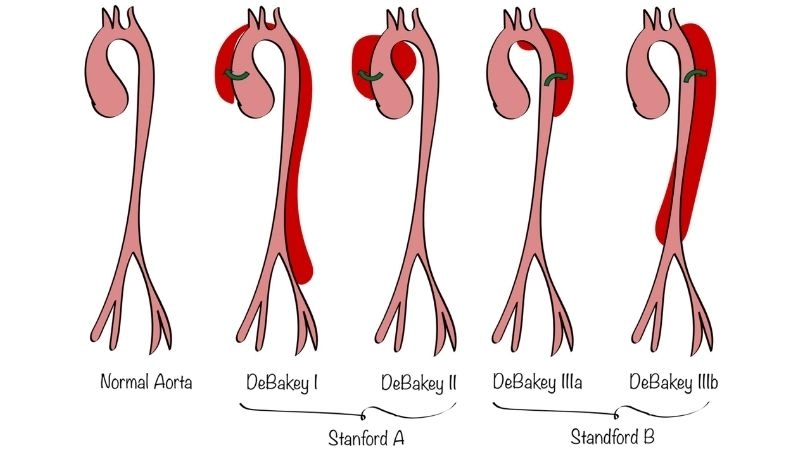
Effective aortic dissection treatment approaches today
>>> See more: Subclavian Steal Syndrome what you need to understand
Key symptoms of aortic dissection to watch for
- Sudden, severe chest or upper back pain that feels sharp or tearing, often radiating to the neck, jaw, or down the back.
- Shortness of breath, difficulty speaking, or loss of consciousness may occur when blood flow to vital organs is restricted.
- Stroke like symptoms including weakness, vision changes, or paralysis can appear if the dissection interrupts blood supply to the brain.
How can you prevent aortic dissection effectively?
- Maintain controlled blood pressure through regular monitoring, prescribed medications, and lifestyle changes that reduce strain on the aortic wall.
- Adopt a heart healthy diet rich in fruits, vegetables, lean proteins, and whole grains to lower cholesterol and strengthen vascular health.
- Avoid smoking and limit alcohol consumption, as both habits significantly damage arteries and raise the risk of developing aortic dissection.

Major aortic dissection causes and risk elements
>>> See more: Causes of Thromboangiitis Obliterans (Buerger's Disease)
Images visual examples of aortic dissection
Aortic dissection occurs when a tear develops in the inner wall of the aorta, allowing blood to flow between layers, causing splitting that may lead to rupture.
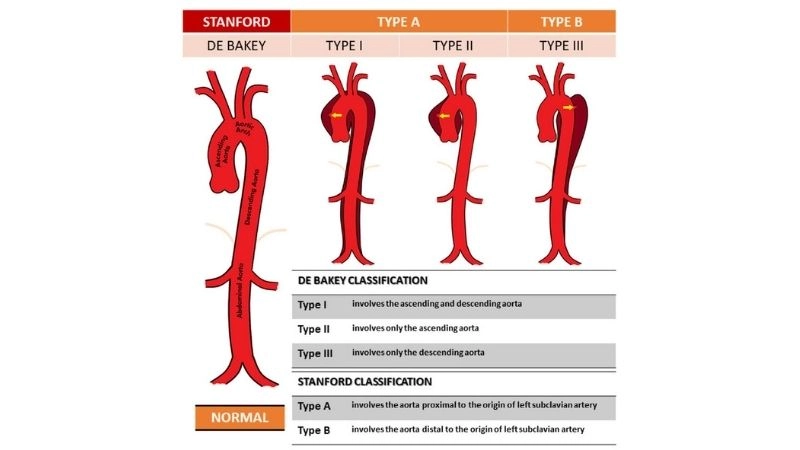
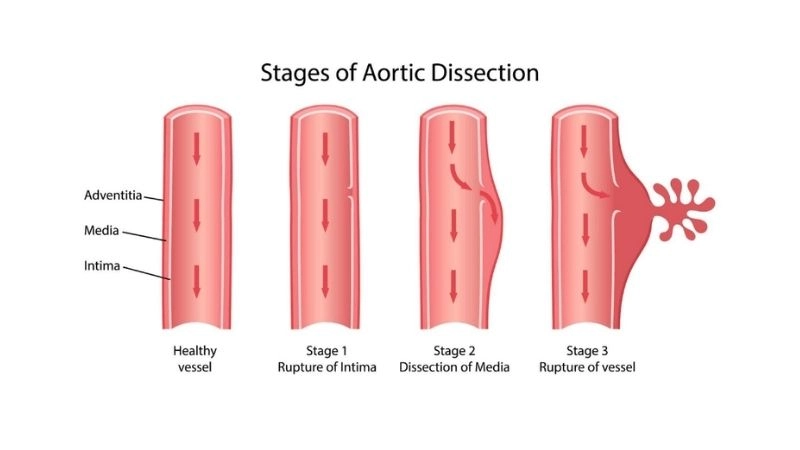

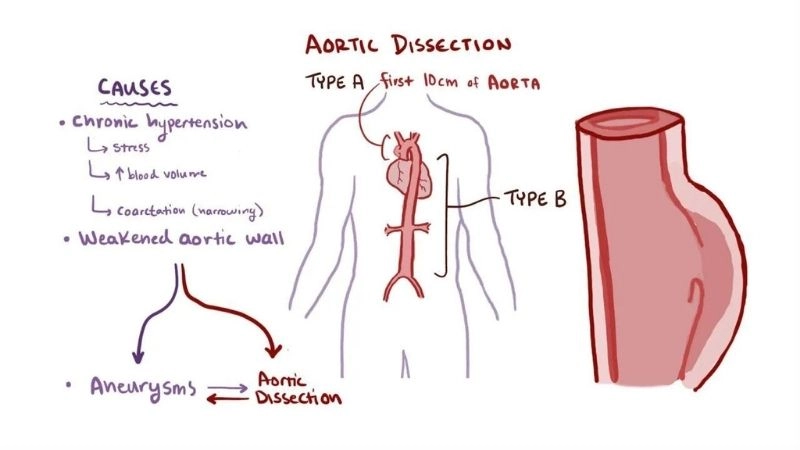

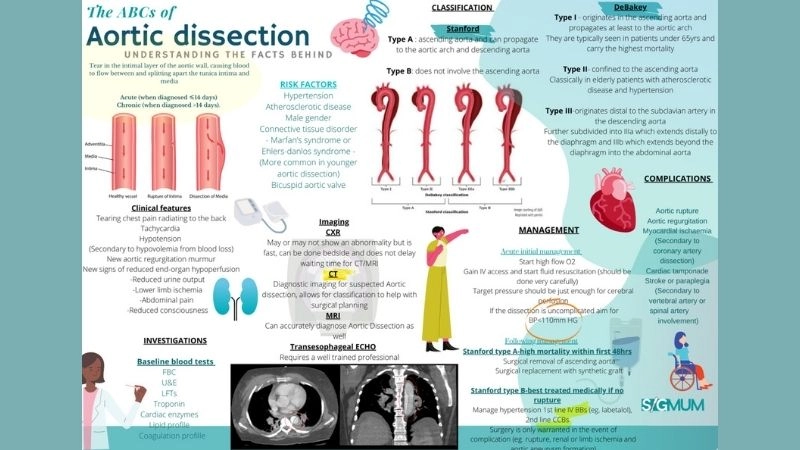



>>> See more: Understanding about aortic aneurysm thoracic abdominal
Understanding aortic dissection symptoms and urgent care is crucial to improve survival, protect heart health, and ensure better patient outcomes.





